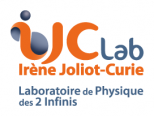Description du sujet de thèse en anglais
In April 2024, the Simons Observatory’s (SO) [1] large aperture telescope will obtain its first light. This telescope, equipped with a 6m primary mirror and a focal plane filled with 60,000 detectors, aims to provide definitive measurements of cosmic microwave background (CMB) polarization across the entire sky accessible from Chile.
The measurement of the small angular scales of CMB temperature and polarization will enable us to address several lingering questions: What is the number of relativistic species in the early universe? What is the spectrum of primordial perturbations? What is the particle nature of dark matter and its interactions?
Our Ph.D. proposition unfolds within this context. The successful candidate will have full access to the most advanced CMB data collected by the Simons Observatory telescope, playing a pivotal role in their analysis. The Ph.D. thesis will primarily concentrate on extracting cosmological information from this data and testing models that go beyond the conventional ΛCDM paradigm.
A particular focus will be on the combination of different probes, how can we combine SO and Planck data? How do we combine measurement of primary anisotropies with measurement of CMB lensing? How can we get the best cosmological constraints combining CMB and large scale structure data?
Profil du candidat
We seek a candidate with robust theoretical physics expertise, particularly in statistical field theory, general relativity, and plasma physics. The project will entail coding to extract statistical data properties; hence, proficiency in a programming language (primarily Python, used extensively within the collaboration) is essential. Additionally, as interactions within the collaboration will be conducted in English, strong communication skills are a prerequisite.
Encadrement de la thèse
Thibaut Louis led the paper presenting the cosmological results of the ACTPol telescope [2], precursor of the Simons Observatory telescope. He is pipeline lead for the Large Aperture telescope of the Simons Observatory collaboration in charge of extracting cosmological parameters from the maps.
The project is based at IJCLab with team members X. Garrido, S. Henrot Versille and M. Tristram. M. Tristram and S. Henrot Versille were members of the Planck core team, they have a large expertise on the data analysis of this experiment.
In addition to our team, external collaborations are an essential strength of the project. The PHD candidate will benefit from established collaborations with CMB experts at Princeton, Berkeley, Oxford and Cardiff universities. The successful applicant will have travel opportunities to these universities. Interested candidates should contact Thibaut Louis (louis@lal.in2p3.fr), we will also propose a master internship related to the project. Additionaly you can contact our former Ph.D student Adrien La Posta, now postdoc at Oxford University (adrien.la.posta@gmail.com).
Bibliographie
Journal of Cosmology and Astro- Particle Physics, v. 2019, n. 2, p. 056, Feb 2019.
[2] Louis, T. et al. The Atacama Cosmology Telescope: two-season ACTPol spectra and parameters. Journal of Cosmology and Astro-Particle Physics, v. 2017, p. 031, Jun 2017.









